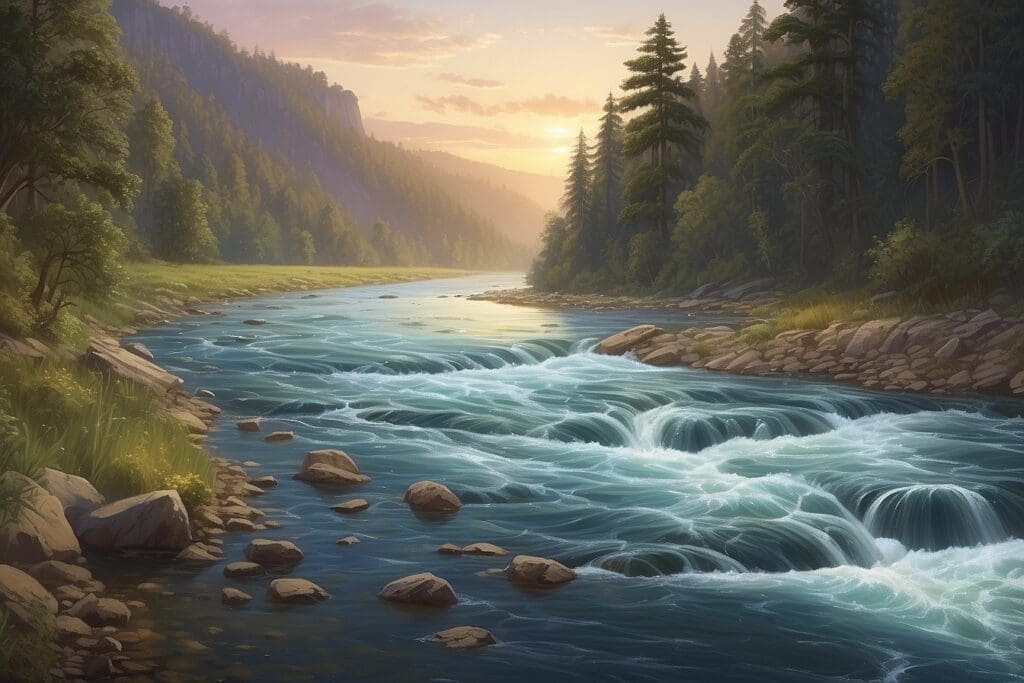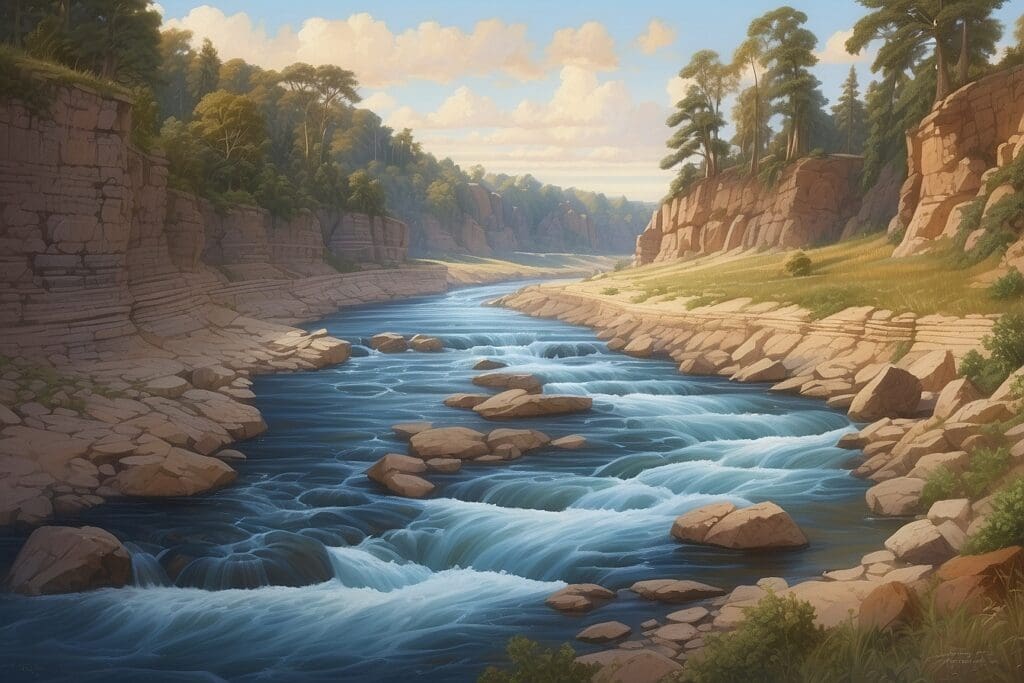Just a year before the first Earth Day in April of 1969, the Cuyahoga River in Ohio caught on fire.1 Now that sounds pretty absurd, considering a river is comprised of water, the natural counterbalance to fire. But Cuyahoga was the dumping point for the vessel of industrial pollutants being carried from Cleveland to Lake Erie. Contaminated with oils and debris, Time Magazine once described the river as more of a static heap of disgusting sludge than an ambulatory waterway.2 And although the fire (most speculated it ignited via sparks from an adjacent train track) only lasted for a half hour—its wake up call is still resonating through the American public as a design of how not to treat our rivers.
Since Cuyahoga, state and federal governments have passed loads of initiatives in attempts to prevent aflame rivers or the like from occurring. The Clean Water Act (CWA) was the initial piece of legislation passed in 1972 and later revised in 1977. Besides the CWA and the Safe Drinking Water Act, the Federal Government has enacted programs to ensure that our watersheds—areas that drain into a common waterway—are protected.3
But is the legislation working? To some degree yes, and to some degree no. It depends on who you are talking to and how you gauge success.
Top 10 Most Endangered Rivers

I didn’t even know that waterways could be labeled as “endangered” until I began conducting research for this article. Snails, eagles, even ferns can be endangered… but rivers? I guess I should have know that this was possible as soon as I read that water could catch on fire, but alas, I am forever the optimist.
Sadly enough, the Most Endangered list from 2009 boasted an entirely new catalogue of rivers than from 2008. Whether this was to draw a heightened awareness to the widespread damage to multiple rivers, because more rivers became more polluted, or because others became less so, I am unsure.
The Sacramento-San Joaquin River topped the list at number one on the American Rivers Association’s list of top 10 threatened or endangered rivers. If you live in California, you know that the water wars between SoCal and NorCal are getting more intense as droughts are on the rise and clean water is getting harder to come by. The north is heavily supplied by the snows of Mount Shasta, but Southern California claims much of the waters out of need, despite their distance from the source. The river is the largest watershed in the state of California, but since its waters are used all over the state, the river has to literally be pumped opposite of its normal flow in order to export it into the different regions. Plus, because it is a natural flood plain, the river is suffocated by levees and the adjacent land needing the water is dried up. The delta ecosystem is reportedly on the verge of environmental collapse.4
Laurel Hills Creek in Pennsylvania, which is listed as the seventh most endangered, is suffering similar threats of ecosystem failure because of excessive water withdraws and unsustainable usage. New ski resorts and golf courses are expected to be constructed in the coming years, which will place more strain on the already stressed environment.5 Similarly, Cache la Poudre River in Colorado, St. John’s River in Florida, and the Niobrara in Wyoming and Nebraska all made the 2008 top ten list because of water diversion for human use or unsustainable practices.6
However, direct human use isn’t the only perpetrator. Dams used for “clean” hydroelectric power create artificial lakes and prevent migratory fish from navigating waters. The Lower Snake River flows through the States of Oregon, Washington, and Idaho, and already has four dams obstructing its natural flow and provoking a decline in fish population. Not only is this bad for Mother Nature, but this also hurts the multi-million dollar fishing industry.
Pollution, especially from industrial dumping and mining is the worst for rivers. The Flathead River in Montana and the Saluda River in South Carolina fell at numbers five and six on the worst list, respectively, because of the vigorous amounts of un-legislated pollutants that flow freely into them. Heavy metals and Sulfurs are the most detrimental, as they lower the pH to a highly acidic level, killing creatures and causing sometimes thousands of years of damage.7
To see all ten for 2009 click here: http://www.americanrivers.org/our-work/protecting-rivers/endangered-rivers/.
Rivers on the Recovery
Luckily, you got the bad news first. The good news? River awareness is on the rise and recovery is following at a steady pace, beginning with dam removals. The Elwha River is the largest watershed in the Northwestern United States and before it was dammed in the early 1900s, it was the single largest salmon spawning river on the Pacific Ocean.8 The newly passed Stimulus Package will contribute an additional $55 million dollars for dam removal, which is expected to be completed by 2011. In Michigan, four dams have already been removed to restore the river to its natural flow.9 Oregon, Montana, and Arizona have all seen significant dams removed and more states are set to follow.
River pollution, especially from heavy metals is unfortunately on the rise in the rest of the world, particularly in China where industrialization has come at the price of the environment.10 Although there is some clean up in the U.S., these important waterways are still being heavily befouled by mining and agriculture, which is the main cause of pollution in the country’s largest and one of the most important rivers, the Mississippi River.11
The Cuyahoga, Today
Luckily for Cleveland residents, the slimy sediment that once comprised Cuyahoga is now a moving body of water. After its 1969 state of being a fire hazard—a paradox I can still not wrap my head around—the river was still not entirely taken seriously. Instead of shoreline, a significant portion of its coast was lined by metal shields that inhibited habitat and wildlife growth.12 Even worse was its aberrant change in depth that restricted oxygen production, allowed pollutants to linger longer, and raise water temperatures. Wildlife have a difficult time adapting to any three of these conditional changes and the amalgamation of all of them left almost nothing alive for over 20 years.
But the EPA had a project to abate the sterility of the aqua environment. The Remedial Action Plan was put into action by the Environmental Protection Agency in correlation with the Army CORPS of Engineers in 1988 to create pockets of wetlands on the shores to promote the return of native species as well as boost water quality. Since its 40 plus years in action, the River has seen an array of success. The steelhead trout had returned by 1999,13 and by 2008 nearly 40 species were found living in the River.14 Today, all sewage going into the Cuyahoga River is heavily cleaned and causes virtually no harm to the River’s ever growing plethora of species. The Cuyahoga isn’t perfect, but thanks to local and governmental efforts, its slow recovery continues its steady path. Progressing from near annihilation to possessing portions of functioning ecosystems? Yeah, I would call that a win.





